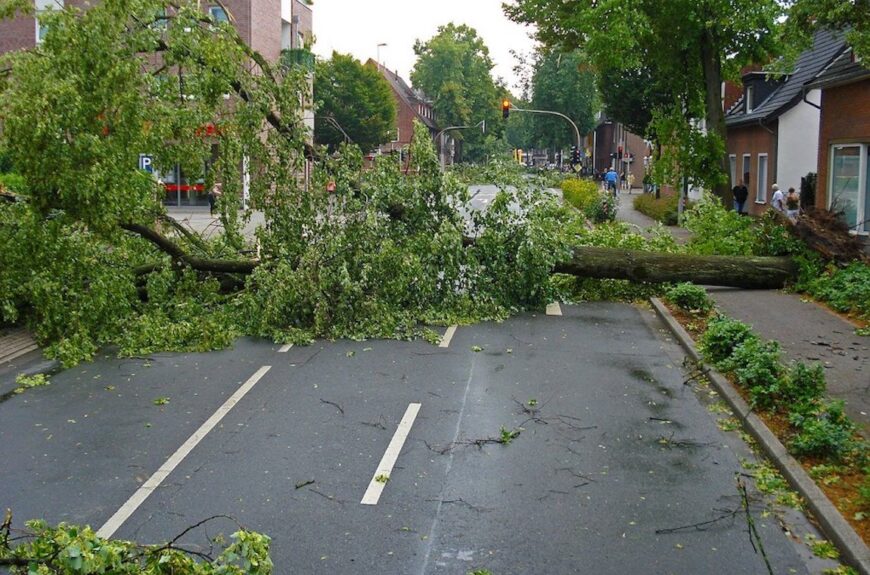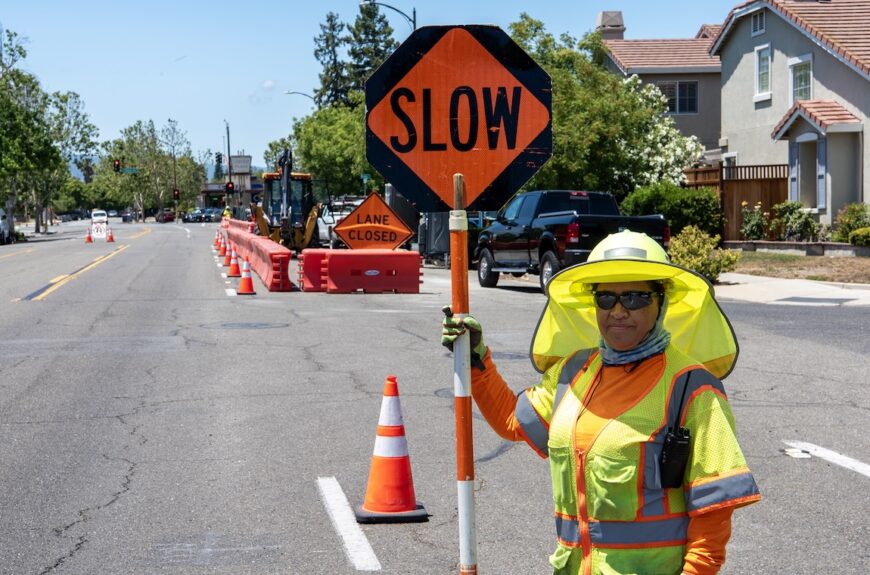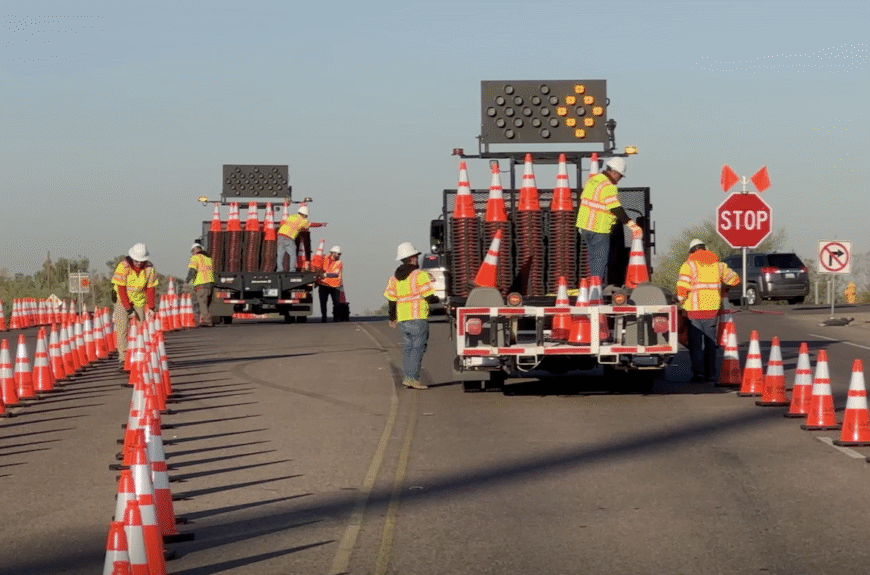
Managing Emergency Traffic Control Crews for Storm Restoration Work
With the 2020 storm season well underway, crews providing emergency traffic control for tree-removal and storm restoration work are prepared to assist in states from Texas to Florida and up the Atlantic Coast. In recent years, Area Wide Protective crews have worked alongside utility line workers, police, fire, and other city and state employees to assist during storm cleanup and restoration efforts following hurricanes, tornados and wind storms across the eastern and southern United States.
“When we have a hurricane or other storm damage, our crews go where they are needed,” said Fran Gleason, Regional Manager, Area Wide Protective. Communication and coordination among AWP Protectors, managers, utility crews and officials from the storm-damaged areas ensure recovery efforts get underway as quickly and safely as possible.
Typically, Gleason said, local or regional managers from utility and telecommunications companies contact him directly when a major storm is expected in the area. In some cases, utility managers or city, county, or state officials will contact AWP’s 24/7 Customer Support Center to request emergency traffic control specialists when cleanup efforts are being planned.
Because AWP crews are often requested to help before a hurricane actually makes landfall, they understand that plans will be fluid at first.
“They may be called to go to Florida, then re-directed to Georgia, then to the Carolinas,” he said. “The utilities are trying to figure how many crews they need to send, and where they’ll need traffic and safety management, depending on what they’re doing,” from road repairs to utility lines to pole restoration work.
Establishing Storm Restoration Base Camp, Traffic Patterns, Equipment Needs
AWP crews assigned to storm restoration work may arrive at base camp along with the first utility workers, and sometimes AWP arrives ahead of contractors, to establish traffic routes for the workers and their equipment.
With dozens or hundreds of utility trucks also at the base camp, a Protector’s day might start with directing traffic out of the camp, and end 12- to 14 hours later, after directing the crews back into camp.
“Our crews work in pairs, and when setting up the teams, we look for experience,” Gleason said. “Storm restoration work is different than normal traffic control, but all of their training prepares them for it. “When we send someone who hasn’t done storm work before, we make sure they’re paired with someone with experience,” he said.
Coordination, Communication Key in Emergency Traffic Safety, Storm Restoration Work
Gleason said utility companies and municipalities appreciate the way AWP handles communication, coordination, and supervision of the traffic control crews who are working primarily with and for the utilities and their contractors.
Gleason said AWP typically sends a manager for about every 12 crews, and that manager is physically stationed with the team.
“It’s very important to have management for supervision and communication,” especially during emergency response efforts. “Customers appreciate being able to communicate with just one person when they need to deploy 50 or 100 teams, he said.
Since every storm damage assignment is a little bit different, Gleason said, they usually send two Protectors per truck, with the basic equipment including cones, paddle signs, and radios. Depending on the extent of the damage, AWP can quickly coordinate getting other equipment as needed, including barricades, and temporary signals, and additional temporary or permanent signage.
Well-Trained Safety Resources, Equipment Needed for Large Recovery Efforts
AWP typically sends two or three 2-person crews for every utility crew, and if necessary, will send Protectors in from other states to establish emergency traffic control patterns and to provide safety services for restoration workers. Additional personnel may be requested through the on-site managers, AWP Regional Managers, or the Customer Support Center.
In addition to the availability of traffic control crews and equipment, Gleason said customers appreciate knowing that all AWP Protectors are trained in CPR and basic first aid.
Gleason says the most important thing is for everyone to be communicating as much as a group as possible, from the time a storm is being tracked through the initial request for emergency traffic control crews through the end of cleanup efforts.
At the time of this writing, the National Hurricane Center was tracking Hurricane Cristobal in the gulf, along with a non-tropical area of low pressure forming in the Atlantic. For information on capabilities and traffic safety resources available to assist in emergency storm response and restoration efforts, contact your nearest AWP office or our 24/7 Customer Support Center at 800-343-2650.



